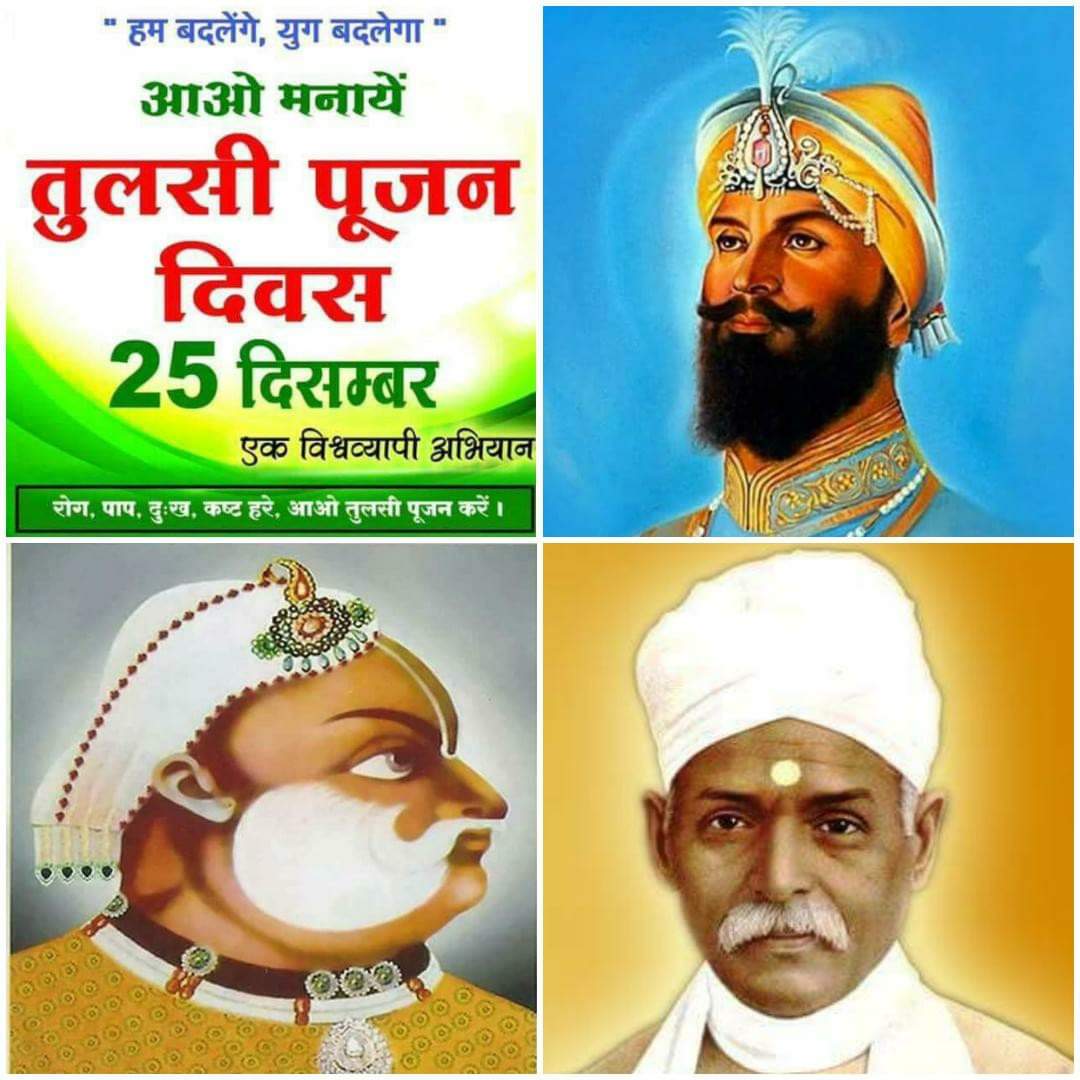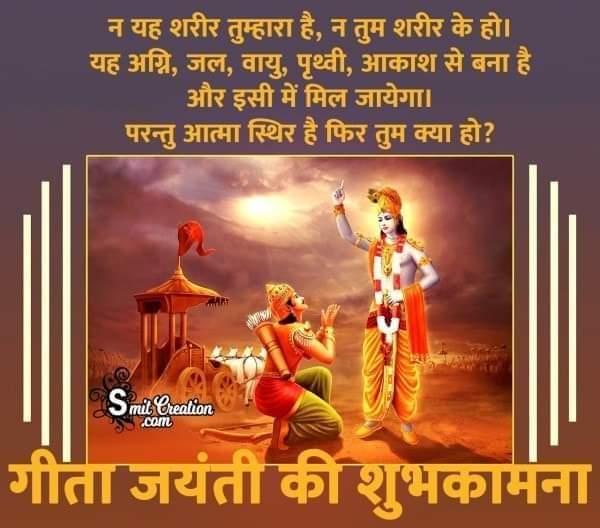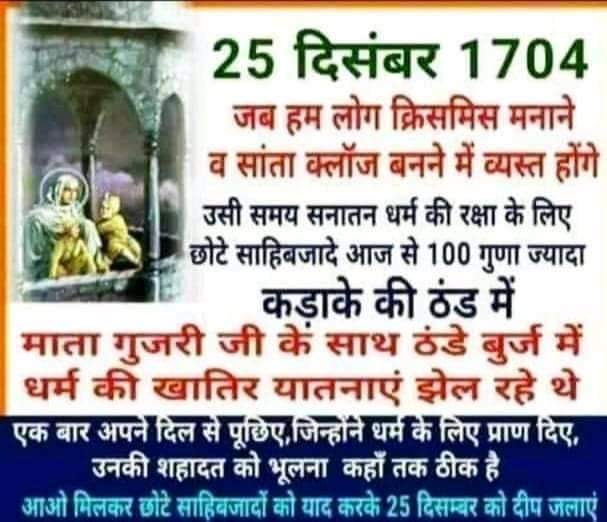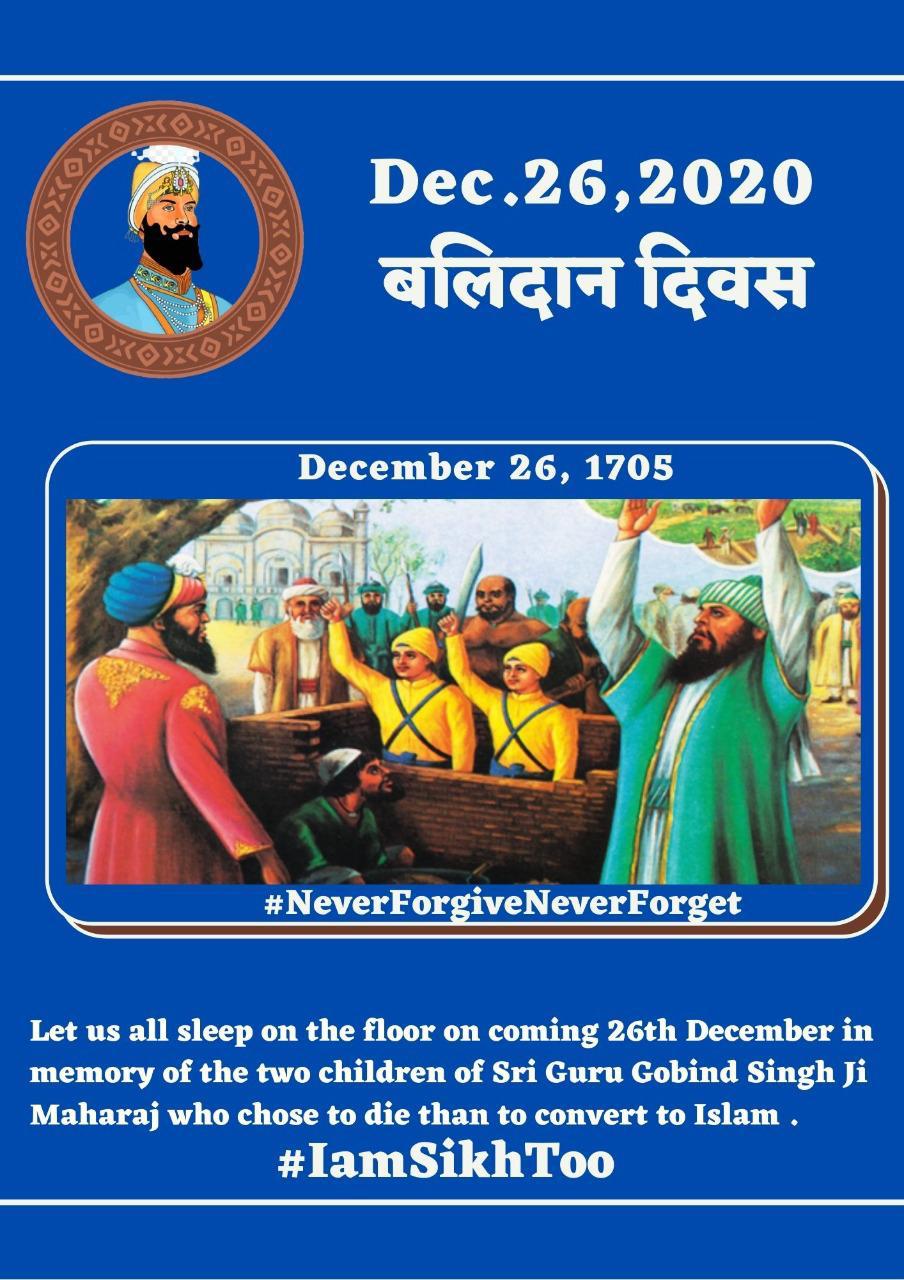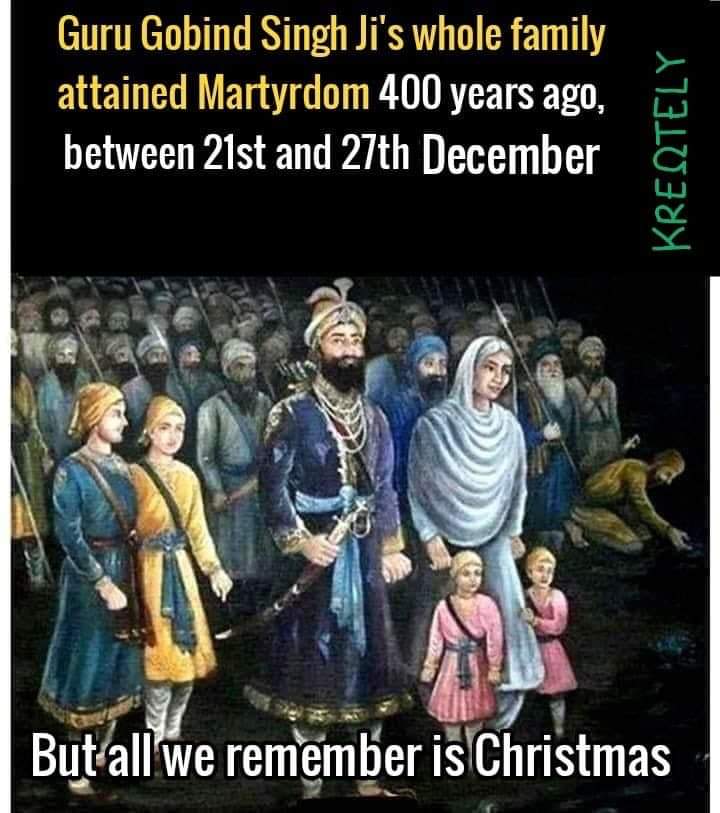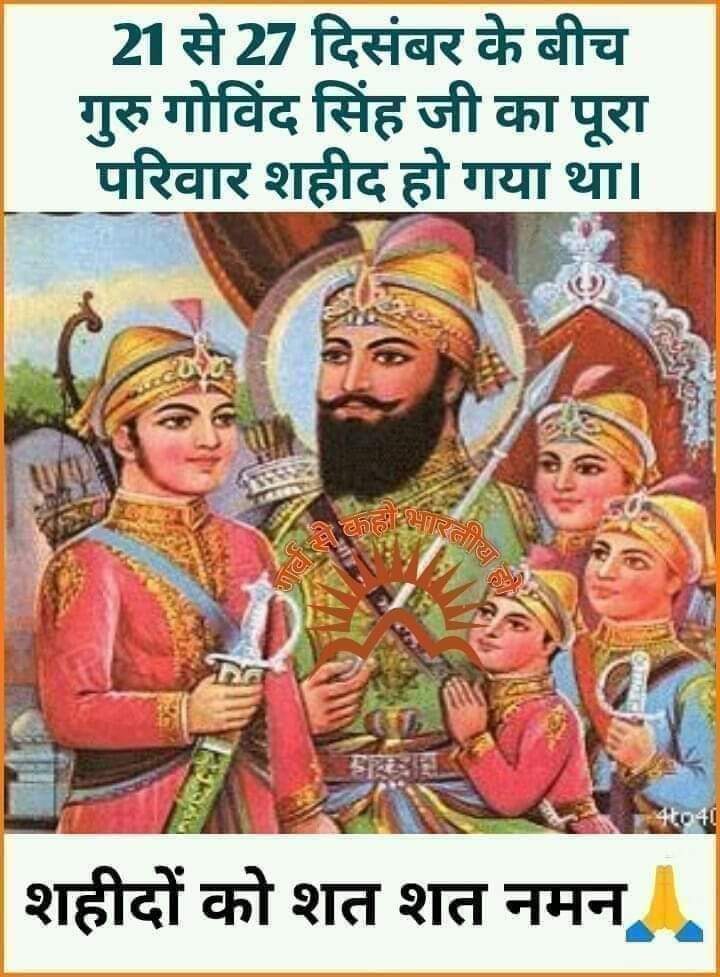Christmas Controversies
No other festival is as universal and controversial as Christmas.
As per M-W dictionary, the definition of Christmas is as follows:
"A Christian feast on December 25 or among some eastern orthodox Christians on January 7 that commemorates the birth of Christ and is usually observed as a legal holiday."
Christ- Mas: is the church service that celebrates the birth of Jesus.
X- Mas: X is the Greek letter Chi that is a short form of the word Christ. In Greek, Christ’s name is Xristos. Therefore, X- mas is the same as Christ-mas. For some, X removes the religious aspect of Christmas by replacing Christ with X and this celebration then becomes more secular to them. You can fill X with anything you like.
People observe or celebrate Christmas in different ways: religiously, in a secular way, or as a holiday. Some people do not pay any attention and become part of the Christmas in a mixed way.
Those who do not celebrate are either indifferent or wage a war against it.
Pagans are unhappy for the Christianization of Saturnalia. Christians are complaining about paganization or secularization of Christmas. Some Christians believe that it is not their festival at all.
Actually, if we dig deep into it, we come to know that Christ’s birthday and life have been surrounded with assumptions. There is controversy whether he was Jewish or Christian; and whether Jews or Romans crucified him.
Contrasts between Hinduism and Christmas
Now, before we go further into the roots of this topic, let us take a glance at Christmas from the Hindu point of view. Here is how I would summarize a few contrasting points.
-
Trees are sacred to Hindus. We worship them and believe that Devi, Devtas, or Bhagwan live in them. We do not believe in cutting trees at mass level and bring cut trees inside our home for decoration purposes. We do not believe in the sacrifice of living beings/trees.
-
We have all four kinds of weather and many varieties of trees but the Christmas tree is typically not found in India.
-
The chimney is not a common architectural entity in Indian households. Hindu children typically touch the feet of elders, in morning, and get gift of blessings every day. The focus of secular Christmas celebration is expectation of a gift by Santa. Materialism and expectation of gift is not a central part of any Hindu celebration. Hindus give gifts on many occasions but expecting a gift from someone is not a primary theme of any celebration.
-
Hindus go by facts. Hindu scriptures have a birth date for Ram and Krishn. Christmas is based on an assumption- the assumption that December 25 is the birthday of Jesus.
-
In Hinduism, one is not a sinner by birth and therefore does not depend on Jesus to save him or her. We all are part of the supreme divinity.
-
Jesus died in place of all other humans so that they can live, i.e., he rescued humanity. We believe in karma and therefore do not need Jesus for salvation. Someone else cannot own our sins and give us Moksha. Moksha is attained individually.
-
Vegetarianism is a common theme in Hinduism. Christmas feasts in church typically include meat and alcoholic beverages.
-
Hindus have so many festivals. It is not an exaggeration to say that every day is an occasion or festival for Hindus. We do not need more from other religions.
-
Santa comes after midnight through the chimney. No one sees him. In Hinduism Devi Devtas give darshan to devotees. They come in front of devotees. During Deepawali, people keep all lights on and front door open for Laxmi Devi to come in. Santa never comes through front door. None of the christians are supposed to see Santa. They have to go to bed early and turn off the lights so that Santa can come as a thief.
-
Hindu Devi Devtas show the right path to humans. Santa judges children but never tells them what is right or wrong. He never hands out any code of conduct book.
-
Santa is portrayed as a funny, lazy, obese person, not as a dignified giver. Compare with boon giving Hindu Devi Devtas.
Christmas was invented to convert people by appropriating pagan’s original practices with Christmas. We know, the birth of Christ is not that important to Christians as his Resurrection. Protestants/Puritans do not even consider Christmas as their festival. Initially, the agenda of this celebration was conversion by assimilation.
When we adopt festivals and traditions, which are not our own, it dilutes our own traditions and festivals and slowly our celebrations are replaced and become obsolete. Additionally, it does not take long (takes only a few generations) to lose our own practices.
Why do some Hindus celebrate Christmas?
-
While Hindus do not believe in Jesus and Christianity, they get attracted to the holiday by the decorated trees, lights, and Santa. They take pictures, share them on social media, and may inadvertently give the false impression that they believe in Jesus.
-
Some celebrate it just to show that they are secular and tolerant of other religions.
-
Some who live in Christian dominated societies celebrate it for the inadvertent fear of exclusion, or to become a part of the process.
-
Some do not think about it much and take it in a neutral/secular/holiday way. They believe in going by the flow.
What were the ways of Celebrations before Christmas?
Before Chistmas was 'invented', people all over the world used to celebrate the coming of long days in different ways. For example, people in Norse celebrated the festival Yuletide. People carried the biggest Yule log to their home and set it on fire. It gave warmth in cold days and sparks of fire represented new lives to arrive in spring. Because of daily sacrifices, food was abundant. Festivities went on for days, until the log kept burning, usually 10 to 12 days. Evil spirits stayed outside in dark and cold weather. Sacred Evergreen trees kept inside were worshiped. Evergreen represented the natural symbol of life when everything else was dead or inactive in dark and cold winters.
Mistletoe is a ceremony in which the Mistle tree is cut to make an elixir, which is supposed to increase life and fertility, and works as an aphrodisiac. Mistle is a magical, sacred plant. It grows on oak trees, symbolizes peace, and wards off evil spirits.
Saturnalia is a pagan celebration to honor the god Saturn, as the name Saturnalia itself indicates. It is a weeklong festival in December when days are very cold, dark, and gloomy. People stay inside and celebrate. They sacrifice many cattle so that they do not have to feed them in winter when it is hard to go out for food. Because of the slaughtering of cattle, there is a lot of meat, so feasting is a major part of the celebration. Holly bushes hung on doors ward off evil spirits. Role reversal occurs. Masters behave like servers; one chosen person from lower status becomes ruler for the duration of the festival. He enjoys all the freedom and good meals and at the end of the celebration, his sacrifice happens. Juvenilia is the same festival for children.
Saturnalia culminates in Winter Solstice on December 25. It is the birthday of unconquered Sun God Mithra. People honor his strength and power. It represents the end of long, dark nights and beginning of bright days.
Origin of Christmas:
Initially, Christians celebrated only the Resurrection of Jesus, not his birth. To them, Easter was more important. They believe that Jesus died in place of all other humans so that they can live i.e. he rescued humanity. For them, his work during his life and his death for saving others are more important than his birth.
During financially hard times, in ancient Rome, the Roman king ordered everyone to come to the city and pay taxes. Mary and Joseph (from Lineage of King David) also went there and Mary gave a virgin birth to Jesus. Many believe that it was spring season as days were not cold; shepherds were outside in the field with their livestock, and people from faraway places were traveling to the city. One speculation is that Jesus was born in September; therefore, Mary must have conceived him in December, probably on December 25. As life starts with conception, not at delivery, the Church decided his birthdate as December 25.
The Bible does not mention Jesus’s birthday. It was the Church which decided that his birthday is December 25, same as Mithra’s birthday, to make it more acceptable to pagans to accept Christianity and Jesus and to extinguish or replace pagan’s own festivals at that time.
The Church attacked every aspect of pagan religion, their culture, and traditions. Praying to sacred trees and gods was a sin. Pagan temples were destroyed. Christians decorated Evergreen trees with apples to make them look like apple trees in the Garden of Eden. Holly bush became crown of assimilation and replaced as much as they could with Christian symbols. Candles, which represent light shown by Christ, were originally candles of yule festival. Pagans protested against the cutting of trees as they considered trees as God and Goddesses. Christians made a strategy and built Churches in dense tree areas. These churches represented a good place, and surrounding trees portrayed as evil, dark forces. Cross symbols were placed on trees to ward away evil spirits. The Norse God of wisdom and magic, Odin, did human and animal sacrifices there, as he believed that these dense tree areas were pious places. Christians portrayed him as an evil person.
Some Christians justify the conversions by saying that Pagans practices were bloody and violent.
Puritans worked hard to stop Christmas celebrations. They were able to remove Christian elements in it, but celebrations continued. Ornaments replaced apples on the tree.
Puritans lost the battle in England and King Charles 11 started Christmas celebrations again.
Some Orthodox Christians came to America and were able to ban Christmas in some American areas. Those who celebrated were fined.
Americans were desperately looking for holidays and celebrations, as they had no major holiday/celebration. Eventually, America reinvented the holiday and gave priority to family, charity, gifts, children, and holiday spirit.
In a nutshell, Christians appropriated Saturnalia and non-Christians appropriated Christmas.
Christmas tree
Christmas tree is the Evergreen tree of Germany. When Prince Albert of Germany married Queen Victoria, he brought this tree to the Royal Palace in England and quickly it became part of almost every home during Christmas time. Then the Christmas card came. Initially, only Catholic Churches were celebrating Christmas. Protestant Churches ignored this celebration, as they believed that Christmas is not Christian at all, it is all Pagan. When Puritans finally decided to celebrate Christmas, under tremendous pressure, they made an effort to do something different and started lighting up the trees.
The tree has pagan origins but now it represents Christian beliefs. The star at the top represents the Star of Bethlehem. Holly bushes’ prickly ends and red berries represent the torture of Jesus and his death. Christian religious symbols replaced pagan rituals
Santa
St. Nicholas was an orthodox Greek Bishop who used to give gifts to people.
According to the Dutch, there was a saint called Sinterklaas, who had a white horse and flew in the sky. He used to come to homes via chimney and left kids gifts in shoes placed near the chimney. The Dutch brought this gift-giving tradition to America.
American author Clement Clark Moore wrote a book in which the main character was Santa Claus who was flying with reindeer and coming through chimneys and leaving gifts for kids in shoes.
It is popularly held that an American author Thomas Mast gave Santa his current image, in one of his books. Since then Santa has come to be known as a jolly, old, fat man in red and white clothes, and a long, white beard. And now we see Santa everywhere, in malls, schools, public places, zoo’s, and hospitals etc.
And our 'Santa Claus' has supernatural powers, unlimited resources, the power to fly, ability to keep track of all people, and the ability to live at the North Pole.
Robert May gave the story of Rudolph, the red nose reindeer.
Therefore, if we put the pieces together, here is how the things add up: The Christmas tree came from Germany, Christmas card from England, Santa from the USA, and secular celebrations started all over the world.
Significance of 25th December in Indian Context
- Remember Velu Nachiyar's sacrifice on Dec 25th. She was killed by British on this day.
- Gita Jayanti (25th December 2020) is the birthday of Bhagvad Gita, the sacred text of Hindus. It's celebrated on the Shukla Ekadashi, the 11th day of the waxing moon of Margashirsha month of the Hindu calendar.
- Maharaja Surajmal's balidan divas is on December 25th
- 351st prakash parv of Guru Gobind Singh Ji
- Tulsi Vivah/Pujan Dec 25th, 2021
- Birthday of Sh. Atal Bihari Vajpeyi and Good Governance Day
- Birthday of Baba Ramdev
- Birthday of Sh. Madan Mohan Malviya
- Death of Chakravorti Rajagopalachari
- 21से 27 दिस० के मध्य गुरु गोविंद सिंह के 17और 14 वर्षीय दो पुत्र युद्ध मे बलिदान हुये और 27 दिस० को 7और 5 वर्षिय दो पुत्र दीवार मे चुनवाये गये ।
- Ambedkar burnt adulterated Manusmrti in a bonfire on 25th of December, 1927.
- 23rd December is the death anniversary of Swami Shraddhanand Saraswati.
From 20 December to 27 December.
In these seven days, the whole family of Guru Gobind Singh ji was sacrificed.
Here Hindustan wishes each other immersed in Christmas celebrations.
There was a time when every family slept on the ground for these seven days in Punjab.
Because Mata Gujri spent these nights, with both small children in the Fort of Sarhind, in the cold tower - on empty floor.
When she was under the custody of Nawab Wazir Khan.
These seven days are a week of mourning in the history of India, not a festival.
Today, the whole of India, including Punjab, drowns in celebration.
The sacrifice of Guru Gobind Singh ji was forgotten by this ungrateful country in just 300 years.
The civilization that forgets its history, the sacrifices of its heroes becomes a forgotten history itself.
This is not time for choral music.
Sacrifice is to be immersed in grief and memory of Guru
Questions/ Observations:
- In USA, the Church and State are separate. Still, Christmas trees shows up in all public places, schools, and government buildings. Is there any explanation for this? If almost all government offices celebrate Christmas, then how are the State and Church/religion separate?
How is it democratic and gives equal rights when non-Christian children also have to do Christmas activities in schools?
How can one avoid this festival in Christian dominated areas? There are decorations, trees, Santa everywhere, in public places, official buildings, schools, malls, zoos, movie theaters, hospitals, parks.
You can choose not to celebrate it in your own home but you cannot close your eyes when you go out.
-
Christians do whatever the Bible says and the Bible does not give 'instructions' to celebrate the birth of Jesus. They have written commandments, everything else is against Christianity. Bible has no Christmas tree and no date for the birth of Jesus. So, is this celebration a violation of the Bible?
-
Many people greet others using phrases like 'Happy Holidays', 'Season’s Greetings', Merry Christmas, Jesus is the reason, Happy HOLYdays? Does Christmas become secular by saying Happy Holidays or Seasons Greetings?
-
Are people forgetting the Christ' birth part or real reason for Christmas and is it all traveling, feasting, gift exchange or gift giving, tree, decorations, Santa etc.?
-
How is it justified to cut trees for decoration?
-
If (religious) minorities cannot mingle with the majority and celebrate their festivals, should majority stop celebrating their festivals?
-
By teaching your children not to celebrate Christmas, are you inadvertently making them more intolerant towards other people’s beliefs? If your own religion has a solid foundation, why are you scared of learning or teaching other religions or beliefs? Are you scared that you will start facing questions, which you cannot answer?
-
How does Santa get so much money to donate? What does he do to earn? How does he choose good or bad children? What are the criteria? Is he better than parents are, as he gives gifts? Is it okay to cheat children and give them false information that gifts are from Santa? For how long this lie is going to survive and what happens when they come to know the truth? What is the long-term effect on children who do not behave well and still get a gift from Santa/parents? Do they start believing that they can get away with anything with no consequences? Is it discrimination by Santa to give gifts to good children only?
To answer some of these questions we need to know the history and take part in healthy discussions. A clear understanding of the festival and facts can make a solid foundation of the decision to celebrate or not.

Bharti Raizada

